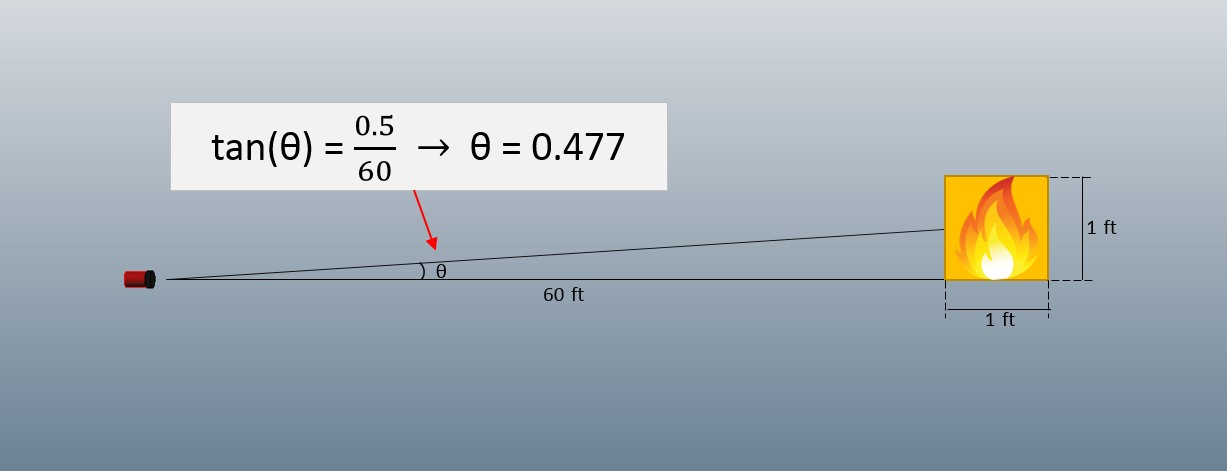Flame Detector Resolution Conclusions
-
While these results will clearly change with project, the overall message is consistent: "coarse" setting such as 2-degree resolution with 0 refinements are acceptable approximations.
-
A suggested method is to use 2deg/0ref for initial setup and re-positioning, then for the final assessment use 1deg/2ref for all detectors.
-
For a detector with a large maximum range (such as 200 feet or greater) the resolution differences are more important. However, the general method of using coarse settings initially, the finalizing the solution with fine resolution, is still appropriate.
-
Much higher accuracy is possible (e.g. 0.5deg/4ref, resulting in a 0.0625-degree accuracy) but is most useful for marketing purposes.
-
An appropriate method for calculating the correct angular resolution is to use the fire size (if defined) required for detection. Take half of this fire size and use trigonometry to find the appropriate angle as shown in below.

Image 12 - Trigonometry calculation for estimating angular resolution from a bird's-eye-view. Note: This image is not to scale.
The above calculation estimates the angular resolution for a 1ft pool fire. For a detector placed 60ft away from the fire, the resolution can be found using the method stated earlier - taking the arc-tangent of half the size of the fire divided by the distance from the fire. The resulting angle will be 0.477, thus using an angular resolution of 0.5 should suffice for the analysis.